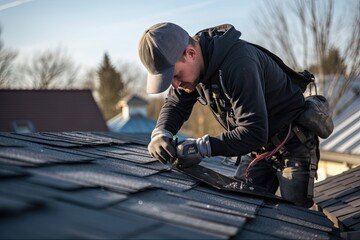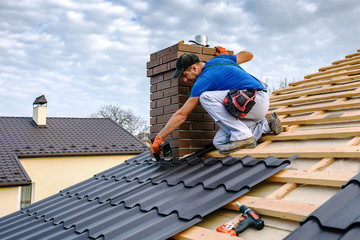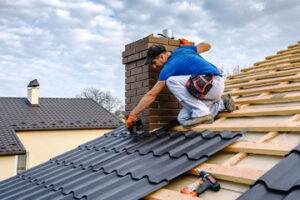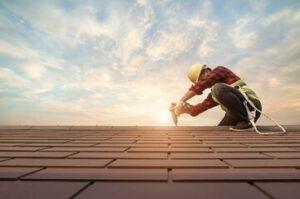Victory Roof Repair Las Vegas NV is essential for maintaining a safe and secure home. Damaged roofs allow moisture and pests to enter. Immediate repairs prevent further structural issues. Professional handling ensures lasting results.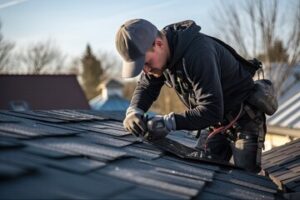
Leaks are the most common roofing problem. Water stains on ceilings indicate hidden damage. Tracing the source prevents recurring issues. Sealing weak spots avoids water intrusion.
Weather plays a major role in roof damage. Strong winds loosen shingles and tiles. Heavy rain increases the risk of leaks. Temperature changes cause expansion and contraction.
Roof inspections identify problems early. Cracked tiles and missing shingles signal wear. Early detection reduces repair costs. Professional assessments provide accurate damage evaluation.
Flashing protects vulnerable roof areas. Around chimneys and vents, it prevents water entry. Damaged flashing leads to leaks and mold. Replacing flashing restores protection.
Gutters affect roof health. Clogged gutters cause water buildup. Overflowing water damages fascia and soffits. Regular cleaning prevents blockages.
Roofing materials vary in durability. Asphalt shingles are affordable but wear faster. Metal roofing resists corrosion and lasts longer. Choosing the right material improves longevity.
Sealants reinforce roof strength. Applying waterproof coatings prevents moisture absorption. UV-resistant treatments reduce sun damage. Regular reapplication maintains protection.
Moss and algae weaken roofs. They trap moisture and cause rot. Cleaning with specialized solutions prevents regrowth. Installing zinc or copper strips discourages growth.
Roof ventilation prevents heat and moisture buildup. Poor ventilation causes wood rot and mold. Ridge and soffit vents improve airflow. Balanced ventilation extends roof lifespan.
Ice dams cause winter damage. Melting snow refreezes at roof edges. Ice expansion lifts shingles and allows water entry. Installing heat cables reduces ice formation.
Structural damage requires prompt repair. Sagging sections indicate weakened supports. Reinforcing trusses and beams restores strength. Professional assessment ensures proper alignment.
Storm damage creates urgent repair needs. Falling branches puncture roofing materials. Hail causes dents and cracks. Emergency patching prevents further exposure.
Underlayment protects against moisture. Damaged or missing underlayment leads to leaks. Replacing it reinforces waterproofing. Proper installation ensures full coverage.
Roof valleys channel water runoff. Worn valley materials allow leaks. Replacing damaged sections restores function. Sealing edges prevents water seepage.
Chimney flashing often fails over time. Loose or corroded flashing causes leaks. Resealing with durable materials improves longevity. Proper alignment prevents future issues.
Animal damage compromises roof integrity. Birds and rodents create holes and nests. Securing entry points deters pests. Repairing damage prevents recurring problems.
Solar panels affect roof health. Improper installation creates gaps and leaks. Reinforcing mounts secures panels. Professional adjustment prevents misalignment.
Roof repair includes skylight maintenance. Cracked seals and misaligned frames cause leaks. Resealing and repositioning improve insulation. Proper flashing prevents water entry.
Age impacts roof performance. Older materials become brittle and crack. Replacing aging shingles restores strength. Regular maintenance extends lifespan.
Tree limbs damage roofs over time. Falling branches puncture surfaces. Overhanging limbs increase debris buildup. Trimming trees reduces risk.
Roof decks provide structural support. Warped or rotted decks weaken roofs. Replacing damaged sections restores stability. Proper ventilation reduces moisture damage.
Fasteners secure roofing materials. Loose nails and screws cause shifting. Replacing and tightening fasteners restores stability. Corrosion-resistant options improve durability.
Painted roofs face weather damage. Peeling and fading indicate coating failure. Repainting with weather-resistant products protects surfaces. Proper preparation ensures adhesion.
Roof repair involves sealing exposed edges. Unsealed edges allow water penetration. Applying caulk and sealant restores coverage. Regular inspections prevent gaps.
Heat exposure weakens roofing materials. UV rays cause cracking and warping. Reflective coatings reduce heat absorption. Thermal barriers improve energy efficiency.
Roof pitch affects drainage. Low-pitched roofs collect water and debris. Adjusting pitch improves runoff. Proper slope prevents standing water.
Roof replacement is necessary for extensive damage. Layering new materials over old ones weakens the structure. Full replacement restores strength. Removing old layers ensures proper bonding.
Insulation improves roof performance. Poor insulation causes heat loss and moisture buildup. Adding insulation enhances energy efficiency. Proper sealing reduces drafts.
Roof repair includes ridge cap maintenance. Cracked or missing caps allow leaks. Replacing ridge caps restores waterproofing. Secure installation prevents shifting.
Roof leaks affect interior walls and ceilings. Stains and mold signal moisture problems. Repairing roof damage stops interior deterioration. Restoring insulation improves comfort.
Debris buildup accelerates roof wear. Leaves and dirt trap moisture. Cleaning roofs prevents rot and mold. Installing gutter guards reduces debris accumulation.
Roofing warranties cover material and installation defects. Proper documentation ensures coverage. Professional repairs maintain warranty terms. Regular maintenance protects investment.
Skylight condensation indicates poor insulation. Adding weather stripping reduces drafts. Replacing cracked glass improves efficiency. Professional sealing prevents water entry.
Vent pipe flashing requires maintenance. Cracked seals cause leaks. Replacing flashing improves waterproofing. Proper alignment prevents shifting.
Flat roofs face unique challenges. Pooling water increases weight and wear. Reinforcing membranes improve drainage. Proper slope adjustments prevent standing water.
Roof hatches need secure installation. Loose hatches cause leaks and drafts. Reinforcing hinges and seals restores security. Weatherproof coatings prevent rust.
Chimney caps protect against moisture and debris. Missing or damaged caps cause interior leaks. Replacing caps improves protection. Proper fit ensures stability.
Roof repair includes fascia and soffit maintenance. Rotting wood weakens structural integrity. Replacing damaged sections improves support. Weather-resistant materials extend lifespan.
Professional roof repair ensures quality results. Experienced contractors handle complex repairs. Proper tools and materials improve durability. Professional assessment ensures thorough coverage.
Roof coating enhances weather resistance. Elastomeric coatings stretch with temperature changes. Reflective coatings reduce heat absorption. Proper application improves longevity.
Safety is crucial during roof repair. Fall protection equipment prevents accidents. Proper footwear improves traction. Professional training ensures secure handling.
Fire-resistant materials improve roof safety. Clay and metal resist heat and flame. Coating shingles with fire-retardant treatments increases protection. Proper installation reduces fire risk.
Roof repair involves structural reinforcement. Weak trusses and rafters compromise stability. Adding support beams restores strength. Proper alignment prevents sagging.
DIY roof repair carries risks. Incorrect installation causes further damage. Professional handling ensures proper techniques. Quality materials improve durability.
Roof inspection schedules vary by material. Asphalt roofs require annual checks. Metal roofs need less frequent assessment. Following manufacturer guidelines ensures proper care.
Flashing and sealant inspections prevent leaks. Cracks and gaps weaken protection. Reapplying sealant restores coverage. Proper alignment prevents misplacement.
Roof cleaning improves appearance and performance. Pressure washing removes debris and moss. Gentle cleaning prevents material damage. Professional techniques ensure safe handling.
Energy-efficient roofing reduces utility costs. Cool roofs reflect sunlight and reduce heat absorption. Proper insulation improves temperature regulation. Professional installation maximizes benefits.
Storm-resistant roofing materials enhance protection. Impact-resistant shingles withstand hail and debris. Reinforced membranes resist tearing. Secure installation prevents lifting.
Roof repair includes improving drainage. Clogged downspouts cause water overflow. Installing wider downspouts improves flow. Proper grading reduces runoff issues.
Regular roof inspections identify hidden issues. Thermal imaging detects moisture and heat loss. Professional assessment improves accuracy. Early repairs prevent costly damage.
Roof repair extends the lifespan of the entire structure. Proper maintenance reduces long-term costs. Professional techniques ensure lasting results. Quality materials improve overall durability.
